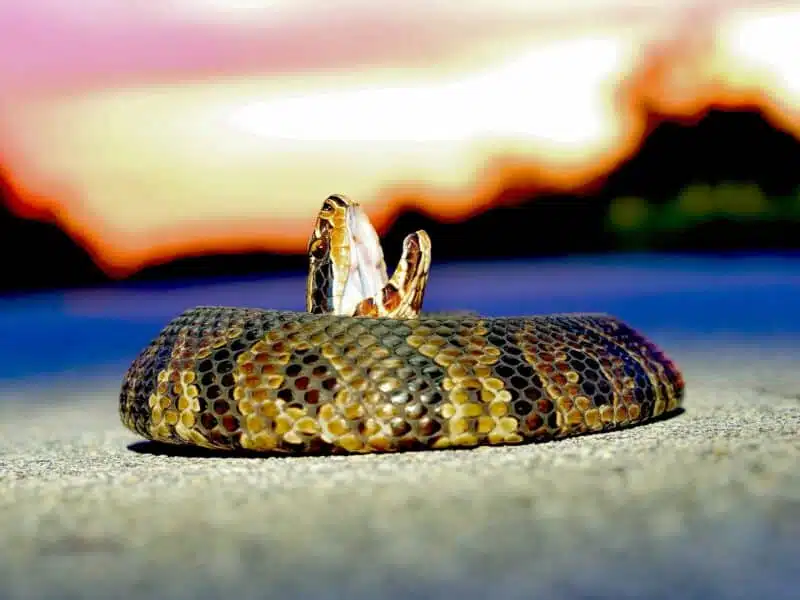Welcome to Swamp Animals. Let’s learn more about this incredible wildlife.
A deluge of murky waters, trees of all kinds, and leaves littered all over. With eerie sounds and reptiles that wouldn’t refuse a free lunch, swamps have unearthly reputations. However, regardless of the swamps’ standing, you can’t overemphasize their importance.
They are vital to the ecosystem, humans, and the various species that draw from its rich resources.
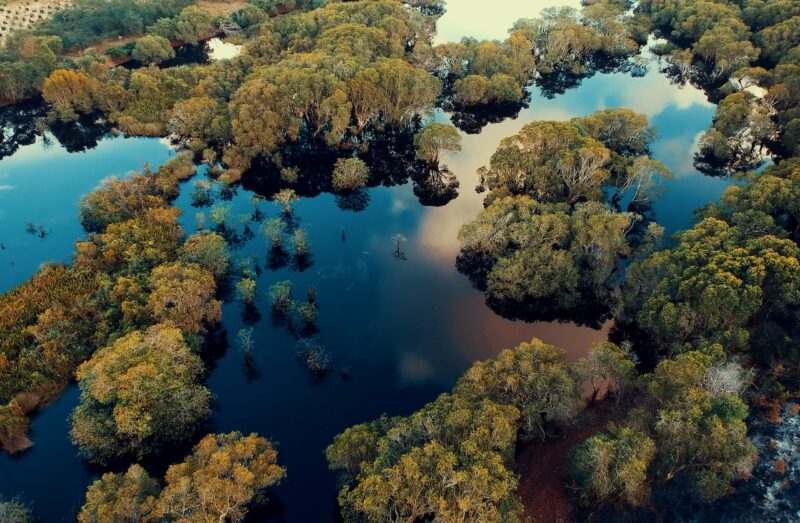
Often considered as transition zones between water and land, swamps are also called marshy areas. Their name comes from the type of trees found in them. Swamps are home to thousands of species.
From birds, fishes, and amphibians to reptiles, these species have found their dwelling place in this rather undesirable place.
What Is A Swamp?
A swamp is an area of land characterized by flooding or saturation of the soil, and it is also a portion of land in water.
It features mineral soil with poor drainage and plant life dominated by trees. They are regarded as transition areas because they contain both land and water.
Swamps are present in every continent around the world except Antarctica. North America has a high concentration of swamps, with 30% of the world’s swamps. Swamps come in different sizes. The largest swamp in the world is the Amazon River Floodplain. It is famous for its large number of trees and fish and its large surface area of 150,000km².
Small swamps aren’t left out, too, as the Okefenokee swamp prides itself as the smallest swamp in the world. It is a 438,000-acre marsh along the Georgia-Florida coastline in the United States.
All swamps are areas of land covered in water. However, there are categories based on their unique locations and salt concentration, and there are Freshwater and saltwater swamps.
Freshwater Swamps
Freshwater swamps form around large lakes, rivers, and streams. They have varying water levels because they are affected by rainfall and seasonal flooding. The animals here can survive because they have adapted to their fluctuating water levels.
Saltwater Swamps
Saltwater swamps, as the name implies, have a high salt content. You can find them along tropical and subtropical coastlines. These swamps come about when high tides overflow muddy or sandy areas.
Specific vegetation, such as mangrove trees, takes root and springs up. The accumulation of soil from decayed roots and leaves aids their growth. This also attracts crabs, shellfish, and animals that feed on fallen leaves.
Asides from the crabs and conchs, other animals have adapted to the undesirable conditions of the swamps. These animals are worth studying. We hope you enjoy reading about Swamp Animals.
#1 Cottonmouth
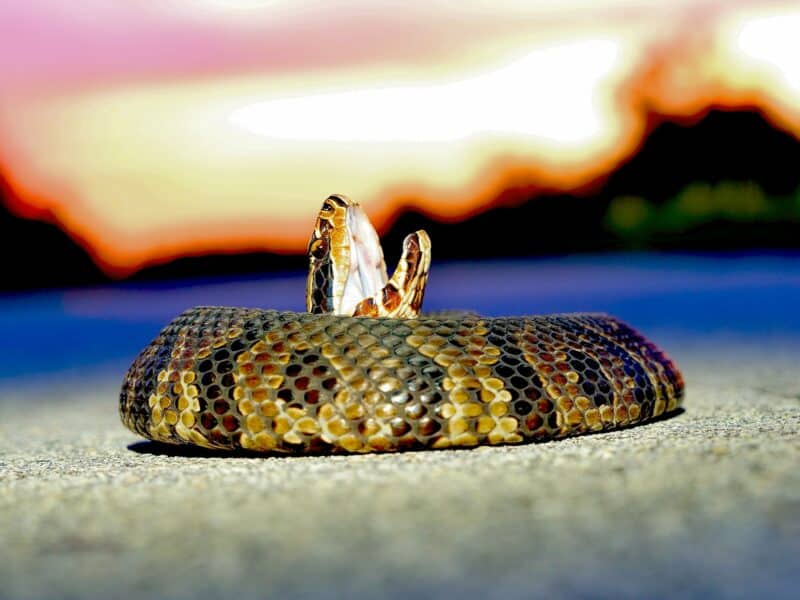
It is also known as the “Water Moccasin .”The cottonmouth is a species of viper that lives in the swamps, and it is known as cottonmouth because of its white-colored mouth.
Despite its vicious appearance and venom, the cottonmouth snake doesn’t attack humans at first sight, and they appear confrontational to scare humans and animals away from them.
However, they wouldn’t hesitate to attack when stepped on or mishandled.
#2 Marsh Rabbit
Rabbits don’t have adaptation to swampy areas, but the Marsh Rabbit is an exception. It is found mainly in freshwater swamps, and this Rabbit is a common occurrence in the swamps of coastal regions, usually in the Eastern and Southern parts of the United States.
It feeds on plants and is active at dawn and dusk–unfortunately, most predators are also active at night.
The Marsh Rabbit hides underwater when it feels threatened and, as such, is a powerful swimmer.
#3 Mosquito
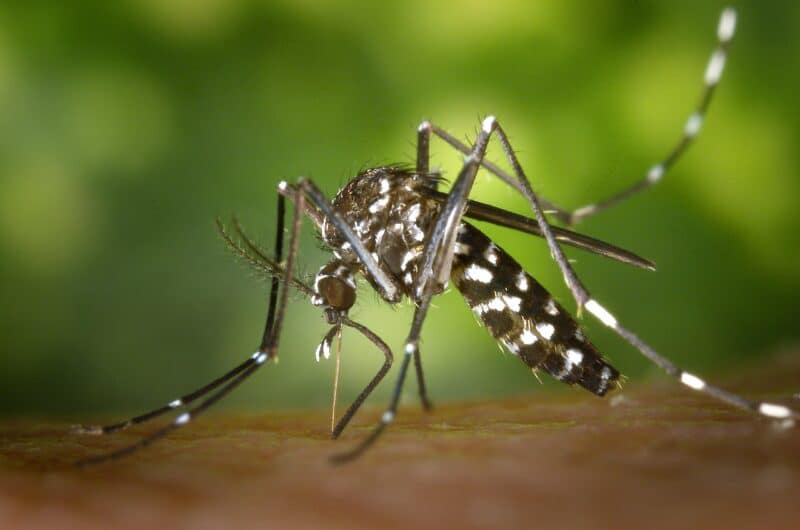
Notwithstanding their minute size, mosquitoes are responsible for the death of millions of people. Research has it that 627,000 people died of malaria in the year 2020.
Mosquitoes inhabit forests, marshy areas, and stagnant water bodies, and this is because mosquito larvae and pupae thrive in stagnant water.
Mosquitoes feed on a wide range of animals. Reptiles, birds, mammals, and even fishes make a good blood bank for mosquitoes. You should protect yourself from them if you want to visit any swamp.
#4 American Alligator
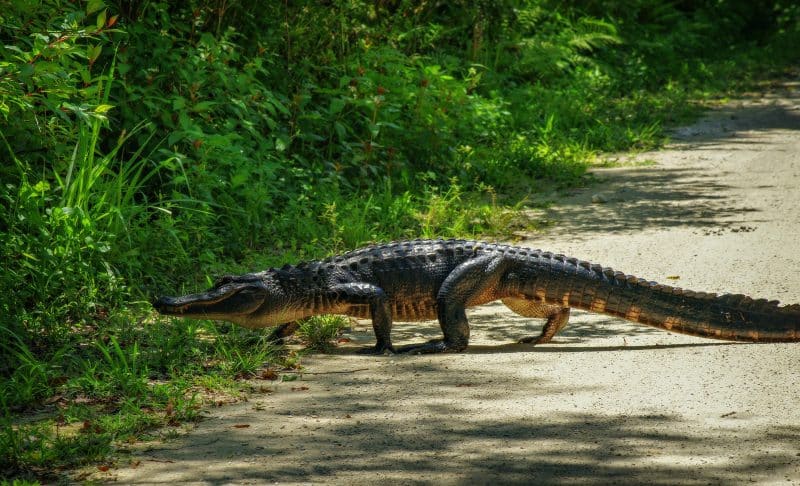
The alligator is a regular feature you should watch out for if you’re in a swamp. Alligators are terrestrial and aquatic animals with powerful tails for defense and swimming. People mistake alligators for crocodiles, but they aren’t the same.
Their primary difference lies in the shape of their snouts, and Alligators possess a U-shaped snout, while Crocs have a V-shaped snout. Crocodiles are beautiful creatures, too, and we should learn more about them here.
While alligators feed on reptiles, fishes, and mammals, they fear humans and would retreat at the sight of one. However, they can be aggressive when startled and wouldn’t refuse a free lunch, so you better be careful with them.
#5 Duck-Billed Platypus
Numer 5 from the list of Swamp Animals. The Duck-Billed Platypus loves freshwater swamps and is a semi-aquatic egg-laying mammal. It spends most of its life in the water, feeding on shrimps, fish, and eggs. Its small size makes it suitable prey for predators like foxes, snakes, cats, and foxes.
The platypus is not an aggressive animal; it tends to swim away from predators.
The male platypus is venomous and will stab its predator with poison-containing spurs on its hind legs.
#6 Snowy Egret
The snowy egret is an immaculate bird found along coastal marshes and swamps. They wade slowly through the water and feed on small snakes, shrimps, fishes, and invertebrates. The snowy egret has a powerful vision that helps it see even in swampy water. It also has long, skinny legs that don’t disturb its prey while it aims for them.
They make good food for owls, hawks, and poisonous snakes, but they quickly fly to safety.
#7 Hippopotamus
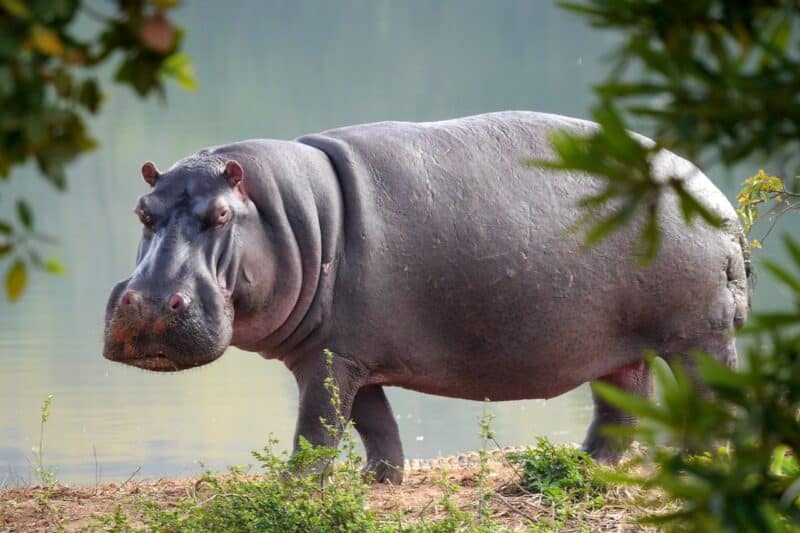
The hippo, also called the “river horse,” is a gigantic animal that lives in mangrove swamps. It also lives in streams and rivers and remains in water during the day to cool down while it feeds on grasses at dusk.
This animal prides itself as the largest land animal and is territorial in water. As such, it is highly aggressive. Despite their colossal size, they are herbivorous animals, do not eat meat, and feed on leaves, fruits, and insects. Though they do not eat meat, they occasionally feed on dead carcasses.
#8 Water Snakes
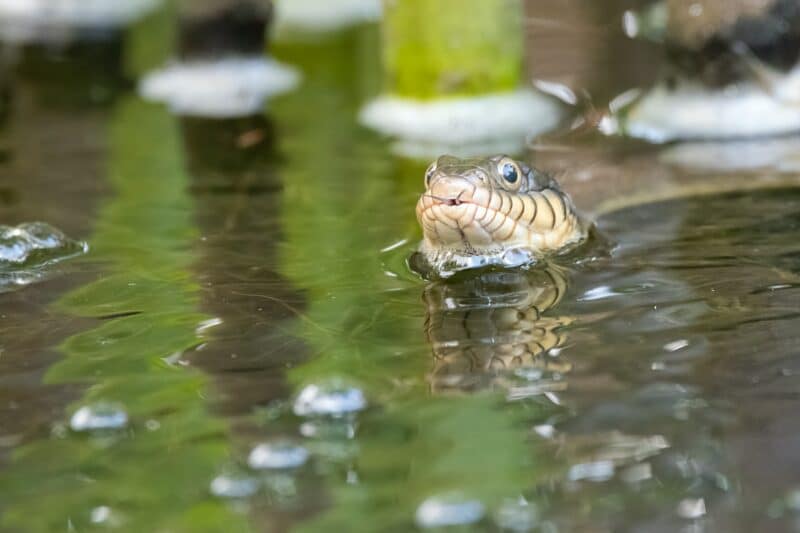
The word “snake” sends cold shivers down the spine of most people; however, water snakes are harmless, have no venom, and usually swim far away from humans. Their menu consists mainly of fish, but they will feed on invertebrates, frogs, and amphibians if the opportunity arises.
They make food for foxes, raccoons, herons, and hawks.
#9 Alligator Snapping Turtle
This turtle is a giant freshwater turtle. It weighs up to 200 pounds and is found mainly in North America. They can hold their breath for 50 mins in water before swimming to the surface to breathe air. They feed on fish and aquatic animals but also feed on plants.
They do not have any known predators and can survive for up to 70 years in the wild.
#10 Pygmy Fish
Pygmy fish usually stay where the water is relatively shallow. They feed on small invertebrates and crustaceans and stay in the roots of plant marshes. They are reserved fishes but will become territorial when necessary.
Summary on Swamp Animals
Swamps have an undesirable reputation; however, they are incredibly beneficial to human life and house several animals. They also keep the carbon content of our ecosystem stable and make the earth inhabitable.
These animals that live here are well adapted to survive the harsh conditions of this environment.
Join our Forum for free today!

- These are The 5 Largest Great White Sharks Ever Recorded - July 19, 2024
- The Surprising Benefits of Big Game Hunting - July 18, 2024
- $100k+ Hunting Experiences The Most Expensive Animals to Pursue - July 17, 2024

